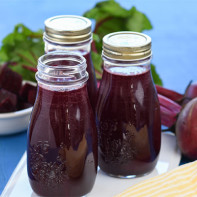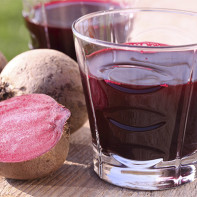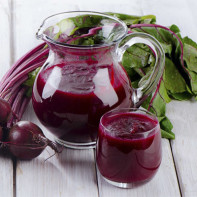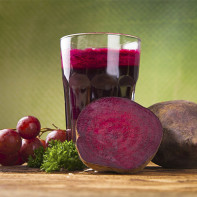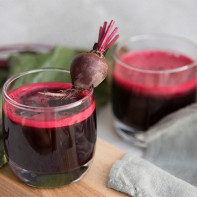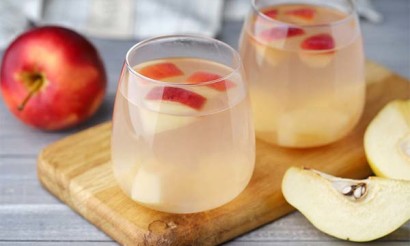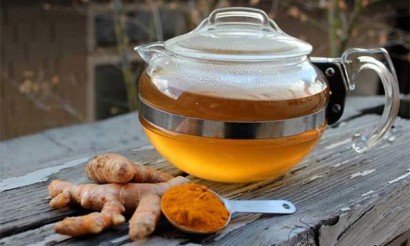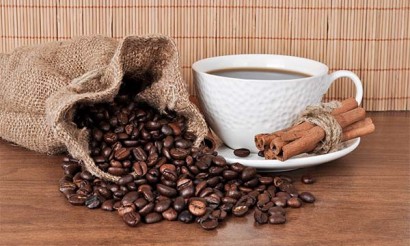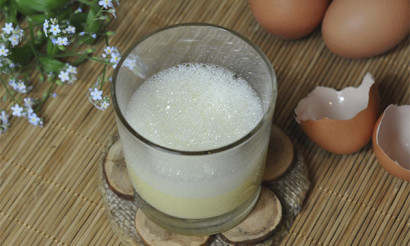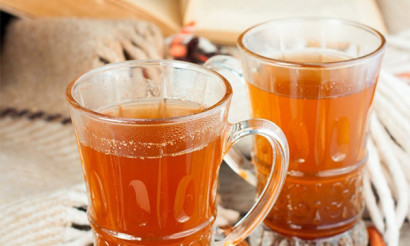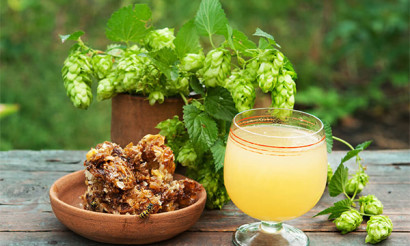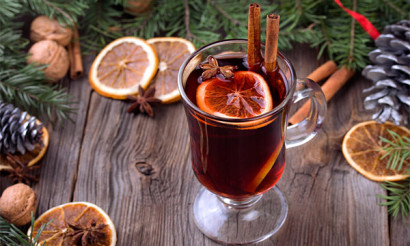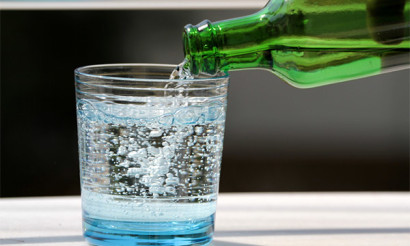Beet kvass: useful properties and contraindications
Beet kvass has been known in our country since ancient times. Our ancestors used this drink to quench their thirst and increase the tone of their bodies. And today it enjoys well-deserved popularity. He helps to reduce high blood pressure, relieves arrhythmia, promotes the purification of the body, expands blood vessels, finally, just takes away fatigue.
- Composition and calories
- Useful properties of beet kvass
- General benefits
- For Women
- For Men
- In pregnancy
- Breastfeeding
- For children
- When losing weight
- How to take beet kvass for medicinal purposes
- Harm and Contraindications
- How to properly store beet kvass
- How to Make Beet Kvass: Recipes
- Non-fermented variant
- Kvass with Yeast
- Recipe for Kvass by Bolotov
- Beet kvass on rye bread
- Beet Kvass with Honey and Raisins
- How much beet kvass can be drunk per day?
- Can I drink it at night and on an empty stomach
- Interesting Facts about Beetroot
Composition and Caloric Content
The energy value of beet kvass is low, with only 42 kcal in 100 g of the product. Since the main ingredient of the drink is beets, the first place in the composition of the product are carbohydrates, there are 9.56 g. Next come the proteins (1.61 g) and on the last place - fats (0.17 g). And what is important is that there is 2.8 g of fibre in 100 g of kvass, which is useful for digestion.
The drink contains significant amounts of vitamin C, so essential for boosting the immune system, E, which slows down aging, A, K, B and folic acid, which promote tissue growth.
Beet kvass contains copper, zinc and iodine, which are essential for healthy nails and hair. There is silicon, which is essential for collagen production, as well as potassium and magnesium, which are responsible for the construction of bones and connective tissues, the elasticity of the walls of blood vessels. This helps reduce blood pressure, has a positive effect on the human nervous system and slows aging.
Useful properties of beet kvass
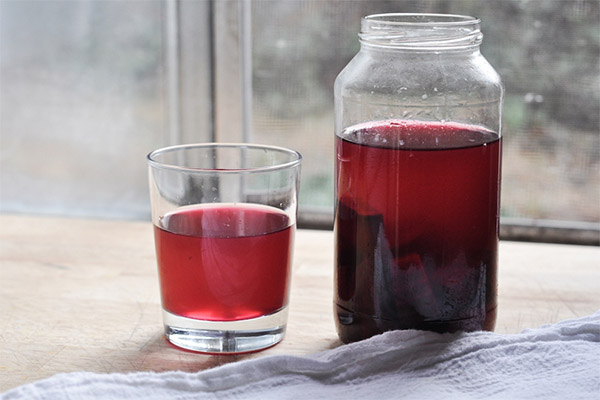
General benefits
Many years of observation have allowed scientists to highlight the favorable effects of the use of beet kvass for the organs and systems of the human body:
- cures constipation;
- helps lower cholesterol levels;
- Cures respiratory infections;
- Improves liver health, helps fight atherosclerosis;
- It has an anticancer effect;
- helps to get rid of excess weight;
- Beneficial effect on kidney function;
- cleanses the body of toxic substances;
- alleviates the condition during menstruation;
- helps to normalize metabolism;
- It fights against dementia and Alzheimer's disease;
- strengthens the skin, connective tissue, bones, blood vessels;
- accelerates cell growth and regeneration of cell nuclei;
- promotes the production of the required amount of gastric acid;
- Reduces allergic reactions;
- Helps heal joints affected by rheumatism.
For Women
The special benefit of beet kvass for the female body is determined by the high content of iron in it, which helps to replenish the monthly blood loss. The drink also helps to even out the negative effects of menopause, stimulating blood circulation and metabolism, having a diuretic effect.
Women who care about their appearance can benefit from its use for cosmetic procedures.
For Men
The practice of folk medicine suggests that in the male body beet kvass favorably affects the hormonal background, and also contributes to the normal functioning of the genital system. During fermentation, the beet drink passes zinc, which increases the content of testosterone in the body, which enhances libido, increases erectile function.
In pregnancy
During pregnancy, beet drink can have a positive effect on the development of the fetus, reduce the likelihood of miscarriage, increase red blood cell production, prevent the development of anemia. And also kvass will help to fight such plagues as the flu and colds, without taking additional medications, so undesirable for women in this position.
When breastfeeding
During breastfeeding a woman gets from beet kvass very necessary for her during this period folic acid, as well as vitamins B1, B2, B6, C and E.
For Kids
Beet kvass should be given to children with caution. In particular, it is not recommended for children under 8 months of age, because they have an immature digestive system, and kvass can cause colic. Allergenic properties of the drink must also be borne in mind as babies may easily give an unexpected reaction to its ingredients. This does not mean that such kvass should be given up altogether, it simply needs to be introduced into the child's diet gradually, starting with small portions and paying careful attention to how the child's body reacts. In this case the child will be able to get the positive effects that kvass has on the adult body.
When losing weight
For people suffering from excessive weight, beet drink can help to lose a few pounds. After all, it helps streamline the body's metabolic processes, helps cleanse the body of toxins and activate the body's natural ability to burn fat, strengthens the walls of blood vessels, cleanses the liver, stops inflammatory processes, stabilizes digestion and fights constipation.
Those wishing to use beet kvass for weight loss should drink a glass of the drink half an hour before a meal. However, it is necessary to adhere to such a scheme for no longer than 3-4 weeks and it is best under the supervision of a doctor. It can also be included in the diet on days of discharge, in which it is eaten along with cottage cheese, dried fruits and apples.
How to take beet kvass for medicinal purposes
The therapeutic use of beet kvass can help to significantly improve the condition of the patient for a number of diseases. As a rule, for therapeutic purposes, the drink is drunk an hour before a meal. The only thing that must be firmly remembered is that one should not allow excessive amateurism. It is necessary to adhere to the rules of admission and, best of all, do it under the supervision of doctors.
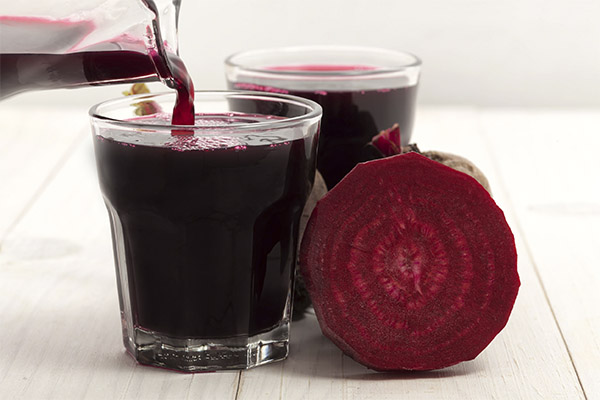
- For patients suffering from hypertension, cramps, headaches, it is advisable to drink half a glass of kvass on an empty stomach three times a day in order to cleanse the blood vessels.
- The liver can be cleaned by drinking one glass of kvass a day, preferably before the first meal.
- Twice a day it is recommended to drink beet kvass for cholecystitis - ¾ cup before a meal in the morning and in the evening. The course lasts for 8 weeks.
- To strengthen the body, improve its general state, stimulate the immune system, it is recommended to drink up to 250 ml of kvass per day. This volume can be drunk in one or two drinks, but only on an empty stomach.
Harm and contraindications
Enjoying the wonderful taste of beet kvass and using its positive qualities to promote health, we should not forget that every coin has a downside. Unfortunately, in the presence of a number of diseases drinking this drink is directly contraindicated, because the mineral salts, acids and amino acids it contains can cause exacerbation of the disease. In particular, patients suffering from the following diseases should limit or completely refuse to drink this kvass, depending on the recommendation of the treating doctor:
- gastritis and hyperacidity of the stomach;
- gout and elevated levels of uric acid in the blood;
- arthritis;
- diabetes mellitus;
- inflammatory diseases of the urogenital system;
- urolithiasis;
- low blood pressure.
Caution should also be exercised if there is an intolerance to the individual components of kvass. It is easy enough to identify it: you just have to listen to your body and do not miss the alarm signals. So, if the drink causes digestive upset, painful sensations in the gastrointestinal tract or other allergic reactions, it should be abandoned, at least until a visit to the doctor, who can assess the characteristics of the body of a particular patient and give competent recommendations.
In any case, the main criterion for the permissibility of drinking beet kvass is moderation. It is known that the same food can be both useful and harmful, depending on how much it enters the body. The general rule for this drink is not to exceed its daily dose, and for people suffering from the ailments listed above, it is necessary to adjust the amount of kvass consumed according to the recommendations of doctors. If the undesirable effects still make themselves felt, you can try to solve the problem by simply changing the recipe for the drink - a slightly modified composition can remove the negative effect.
How to store beet kvass
The process of preparing beet kvass, regardless of the differences in recipes and technology, ends with cooling the drink to about 5°C, that is, the temperature of the domestic refrigerator. It is advisable to continue to store it in refrigerator conditions. If the drink is to be consumed over several days, it can be kept in open pitchers. If it is poured into plastic bottles and sealed tightly with lids that exclude air access, kvass can be kept in the refrigerator for several months.
In a metal-closed glass jar kvass will retain its useful qualities for up to 8 months. This is very convenient because it allows you to make large amounts of kvass in the summer time. This way, it will always be on hand and can be used both as a refreshing drink and as a filler for summer soups such as beet kvass or cold borscht.
How to make beet kvass: recipes
To prepare beet kvass is quite feasible for almost any housewife, because the ingredients in any season can be bought in the nearest supermarket. Beets are perfectly stored all year long until the next harvest, and it is no problem to get it. The question is how to choose it correctly.
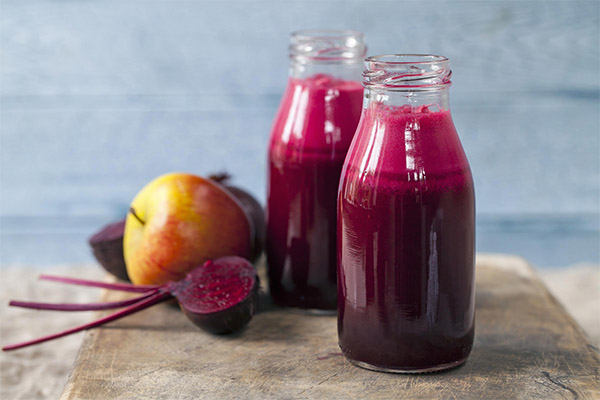
The best way to buy beets is at the market, although a supermarket with a good reputation will also do. First of all, the root vegetable should be fresh. This is indicated by its dense consistency and a rich bright color. You should not take too overripe, sluggish or too large beets. The shape of the fruit should also be rounded, without strong irregularities. If it is sold with a haulm, the leaves should be cut off as soon as possible, as they continue to draw juices from the root, and after a few days it will become sluggish. Washed and dried beet roots can be kept in the refrigerator for several weeks. The leaves, on the other hand, are best used within the first few days of purchase - the fresher they are, the better.
Below are some recipes for making beet kvass - the most popular among amateur cooks and easy to follow.
The yeast-free version
Ingredients:
- Beets, medium size - 4 pcs.
- Carrot - 2 medium sized carrots.
- Filtrated cold water - 3 l.
We start cooking by thoroughly rinsing the beets in running water. It is better to do this with a brush specially designed for washing vegetables. With a potato peeler cut the skin and cut the root-crops into small (1x1 cm) cubes. Put the sliced beets in a three-liter jar: it should be about half full. A couple of carrots cut into julienne strips or grated on a coarse grater and put in with the beets.
Fill the jar to the top with cold drinking water, tie the neck with gauze and put it in a dark place for a few days. When the fermentation process begins and gas bubbles are released, rising from the bottom of the jar to the top, and the liquid turns a rich burgundy color, kvass is ready to drink. It can be poured out of the jar by pouring boiled water into it.
To the finished kvass can be mixed in various proportions of juice currants, cranberries, rowanberries, or buckthorn. It is allowed to add a small amount of kefir, chopped herbs, spices to taste - this will positively affect the taste of kvass and enhance its useful properties.
Kvass with yeast
Using yeast accelerates the fermentation process and kvass will be ready in two days. The taste will be richer and more tart. Strongly chilled, with ice added, the drink is perfectly refreshing in hot weather.
Ingredients:
- Beets, well ripened - 500 g.
- granulated sugar - 100 gr.
- Cold drinking water - 4 liters.
- Yeast - 10 g.
Rinse beets well, peel them and cut into small pieces. Spread out on a baking tray and place in an oven, preheated to 160-180 ° C, so they dry out. If you cook in the summer, you can dry the sliced beets in the air in a well-ventilated place, protected from direct sunlight.
Soaked beets put in a large enamel bowl and pour water so that it completely covers the pieces. We put the pot with beets on the fire, bring it to a boil, and then turn down the heat and cook until the pieces of root-crops completely soften. Strain the broth through a fine sieve. You can even sieve lined with gauze for better filtration. Pour the filtered broth into a three-liter glass jar and fill it to the top with boiled water at room temperature. Pour some of the broth into a small container and dissolve the sugar and yeast in it, then pour it back into a large jar and leave it to ferment for two days in a dark place at room temperature.
After about 48 hours the kvass is ready. Once again we strain it and pour it into carafes or plastic containers with lids. Use heavily chilled.
Recipe for kvass by Bolotov
Recipes for drinks according to the methods of Academician Boris Bolotov are widely popular among fans of kvass created at home. He developed a number of kvasses based on a variety of healing herbs. However, before trying to make kvass according to Bolotov, it is necessary to keep in mind that the academician's drinks have pronounced medicinal qualities, so before consuming them it is very desirable to consult with a treating doctor.
Ingredients:
- Well-ripened beets - 2 kg.
- granulated sugar - 80 grams.
- Milk whey - 500 ml.
- Drinking water - 3 ml.
- Sour cream 20% fat - 1 tsp.
Beets are thoroughly washed, peeled and grated on a coarse grater. Next, we make the leaven. In a small bowl we put sugar and sour cream, pour the whey and mix well. We put the grated beets in an enameled saucepan and pour the resulting leaven. Thoroughly stir it. Leave the pot in a dark, warm place for 3 days. Then collect the mold that has appeared from the surface, pour 3 liters of drinking water and leave to ferment for another 3 days. We continue to gently remove the mold that has appeared.
The next step - strain the infusion through gauze, adding if necessary, warm drinking water and leave for another 12 days. Ready kvass pour into smaller containers with lids and place in the refrigerator at +5 ° C.
Beet kvass on rye bread
Ingredients:
- Beets, medium size - 4 pcs.
- Shirt of stale rye bread - 1 pc.
- Cold filtered water - 3 liters.
- Sugar - 150 gr.
Rinse beets well, peel them and grate on large grater (you can cut it into small cubes). Shredded beets put in a large glass jar and pour water at room temperature. In a small vessel, dissolve sugar and add to the jar with the beets, and put there rye hunchback. Cover the jar with gauze and leave to ferment in a dark, warm place for three days. Fermented kvass filtered through a fine sieve (allowed to use gauze), pour into small containers for storage, incubate for another 3 hours and put in the refrigerator for a few days. Use well chilled.
Beet kvass with honey and raisins
Ingredients:
- Well-ripened beets - 250 g.
- Drinking water - 2 liters.
- Flower honey - 40 gr.
- Medium sized lemon - ½ piece.
- Raisins - 15 pcs.
For this kvass it is better to choose ripe, sweet, dark burgundy colored beets. The preparation begins with rinsing the beets, peeling and chopping them. We cut it into small pieces. Preheat the oven to 160 ° C and load it with slices of beets on a tray. Dry until the beets are soft (time depends on the size of the pieces), avoiding over drying.
Drinking water heated in an enameled saucepan. If the water was purchased in the store in a plastic bottle, it is not necessary to bring it to a boil. We add the juice of the prepared lemon and honey to the hot water. A pan with water cool a little, put dried beets in it, add raisins. Cover with a lid and leave in a warm place for 2-3 days. Ready kvass strain through gauze, folded in several layers, pour into containers and place in the refrigerator.
How much beet kvass to drink per day
Determining how much beet kvass you can allow yourself to drink per day, you must be guided primarily by the needs and characteristics of your particular body and the properties of the beverage consumed. Since this drink has healing properties, it is necessary to keep in mind the basic principle of healing: do no harm! The general opinion of doctors is that in the absence of obvious contraindications to the use of beet kvass it is possible to drink up to three glasses a day, i.e. about 600 ml, so as not to create an excessive load on the stomach and not to cause digestive disorders. Naturally, people who know about the problems of their gastrointestinal tract, the presence of arthritis or gout, low blood pressure, have to significantly adjust this volume for themselves, especially if it is also advised by the attending doctor. Well, patients with diabetes should remember that beets and beverage from them contain a lot of sugar.
Can you drink at night and on an empty stomach
If you drink beet kvass at night, it will get enough time to have its beneficial effect on the digestive system, to manifest its ability to cleanse the body, most effective at rest. But at the same time we should not forget about its ability to reduce blood pressure. People who have low blood pressure, drank at night kvass may do more harm than good. And of course those who take medications prescribed by the doctor at bedtime simply need to ask him if they can be combined with this drink.
As for taking kvass on an empty stomach, this is even recommended when taking it as a means of recovery. A quarter of a glass is taken before each of the three main meals about 2-3 hours before a meal. In this case, you should not forget about the ability of beets to irritate the mucous membranes of the gastrointestinal tract. Therefore, as in all cases, the reception of kvass on an empty stomach should be discussed with your doctor.
Interesting facts about beets
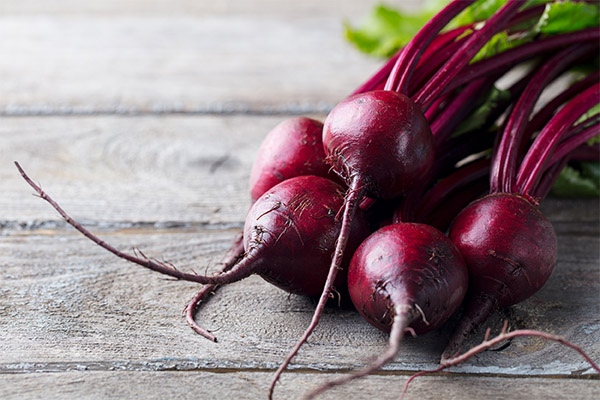
Beets have been known to mankind since ancient times. But originally it was perceived primarily as a medicinal plant. For example, as early as 2 thousand years BC, its roots were used as medicine by the peoples who inhabited the Mediterranean coast, and ate only the beet leaves. Such ancient medical luminaries as Avicenna, Hippocrates and Paracelsus widely used beet juice as a cure. This root vegetable was highly prized in ancient Greece, where it was an indispensable attribute of sacrifices to the god Apollo. There is an opinion that in Russian the word "beet" originated from the Greek "seuclone," meaning "royal. In the Middle Ages, all Balkan and Eastern European countries were saved from the plague with beets. And during the War of 1812, soldiers used the medicinal properties of beets to protect against a cholera epidemic that was spreading.
But the ancient Persians were prejudiced against beets. They considered it a symbol of quarrels, gossip and slander. Scientists suggest that beets owe this attitude to their dark purple color, suggestive of dark venous blood. In any case, a beet planted in a neighbor's house was a herald of enmity. The root vegetable had the same symbolic meaning in ancient Rome, which, however, did not prevent the Romans with pleasure to eat it, and both the roots and leaves.
The beet itself is one of the very few representatives of root crops whose life cycle depends on the particular species. For example, it can be a one- or two-year plant or a perennial. And modern growers have about 70 varieties of beets.
In Russia, beets are mentioned in historical documents since the tenth century, although it became widespread only four centuries later. It was cooked, baked in the oven, and served at tea parties. In the country, there was a belief that the beet gave strength to heroes, heals them from various ailments. And somewhere around the 16th century this root vegetable became the main ingredient in such dishes as borscht, and since then it has taken a well-deserved place in the national cuisine.
Girls successfully used beets to make their cheeks glow like modern cosmetics. By the middle of the 18th century, Russian breeders were able to obtain sugar beets. Since then, sugar in Russia has been produced entirely from sugar beet, not from cane, which had to be imported from across the seas.
One more romantic touch to the portrait of the wonderful root vegetable. According to an ancient belief, if a man eats one beet for two with a woman, they can fall in love with each other.
The tradition of drinking beet kvass dates back to ancient times, and this drink deserves a special place in our national cuisine. One glass of such a drink will help to keep the body in tone, to normalize the functioning of the digestive system, to restore metabolism and the activity of endocrine glands. Extremely easy cooking technology that does not require any special skills of a cook, very cheap ingredients available throughout the year, and the ease of storage of the finished product - all in favor of the fact that beet kvass entered the arsenal of both professional cooks and home hostesses.
«Important: All information on the site is provided solely for informational purposes only. Before applying any recommendations, consult a health care professional. specialist. Neither the editors nor the authors shall be liable for any possible harm caused by materials."

